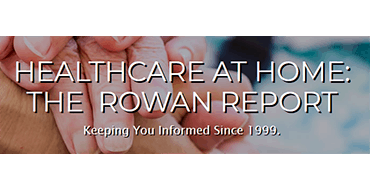by Tim Rowan, Editor
Patient communications tech company Synzi lives at the crossroads of patient care and virus avoidance. CEO Lee Horner told us that utilization volume of his company’s SaaS-based, device-agnostic, two-way video communication system has increased tenfold since the COVID-19 pandemic was declared.
“That is only among our existing customer base,” he added. “It doesn’t include the barrage of phone calls and emails our sales staff has been fielding from prospective new customers.”
He is not sure this is a temporary aberration that will return to “normal” after the virus runs its course. “This may be a harbinger of the new normal,” he told us. “I believe post-acute providers will increase their use of remote patient monitoring and video patient engagement tools beyond what they have used in the past after this crisis is over.”
He said he would not be surprised if remote patient monitoring settles in at more than 50% of pre-pandemic usage. “I may be off by a few percentage points one way or the other,” he clarified, “but, considering the generation we service, video visits are going to become more common as Boomers age.”
Horner quoted research that shows Synzi’s utilization rate has grown to 70 percent while other remote patient monitoring systems average around 20 percent of deployed systems. He attributes some of the reason to how easy Synzi is for elders and their families to use. “Feedback they give us about their patient experience has exceeded our expectations,” he said.
Synzi runs on any device and within any browser. Patients see on the devices a list of clinicians and family members they can call with a simple click. Those who are available online at that moment are in brightened text, those who are off-duty or offline are grayed out. Family and physicians can be invited to conversations between patients and home health nurses and therapists.
“We don’t want voice mail or missed calls,” Horner explained. “We always want our home care agencies to have someone available. When a patient feels comfortable knowing they can get help, they are less likely to place an anxiety-driven 911 call. Our system helps create some comfort and guidance, at the touch of a button. If calling 911 is appropriate, a nurse or doctor can make that determination.
Of course, remote patient monitoring typically involves more than video conversations. Horner told us plans are moving forward to integrate Synzi with Bluetooth vital sign measurement devices. “We can already perform medication reconciliation with our present system,” he said. “A patient or family member can display each medication bottle in front of their phone or tablet or PC and a remote nurse can record them and provide personalized instructions through the video system.”
New CTO, New Product Functions
“I’m a believer in less hardware dependence,” Horner continued. “Rather than make bp cuffs and weight scales part of our product line, we are ready for Bluetooth integration. We have scoped all the work and completed all the wireframes. I hired the former CTO of MD Live, Brian Lichtlin, to do two things for us. First, he will help us make sure we are built for scale. Second, I want him to do what he did so well at MD Live, to build third-party device management. We will be aggressively pursuing integrations.”
A new release within the Synzi video system adds assessment capabilities. “We can now push questionnaires to patients, families, and staff members alike. They are simple, multiple choice or yes/no questions about taking their temperature, breathing symptoms, exposure to people who may have been exposed or who have traveled out of the country, etc. Home care agencies can choose to have field staff take the survey every day before work. Management can run reports to identify patients already infected or at elevated risk. They can flag responses and build customized interventions.
About the loneliness issue
“We have some customers who say, ‘We do not want to give all patients 24/7 access to our staff. There are too many non-urgent, loneliness-driven calls. If there is going to be a video call, we want our clinician to initiate it, at least for some patients,'” Horner explained. “We allow our home health, home care, and hospice customers to customize permissions for each patient. Some can call their favorite clinician, some can call an on-call clinician, some can only request a call by sending a text through the system.” Synzi has also built in the option to turn on a “round robin” system, where a patient can initiate a video session that will ring successive clinicians one at a time until someone answers.
Synzi has a variety of pricing models, some flat fee, some per patient per month, to accommodate different customer needs.

